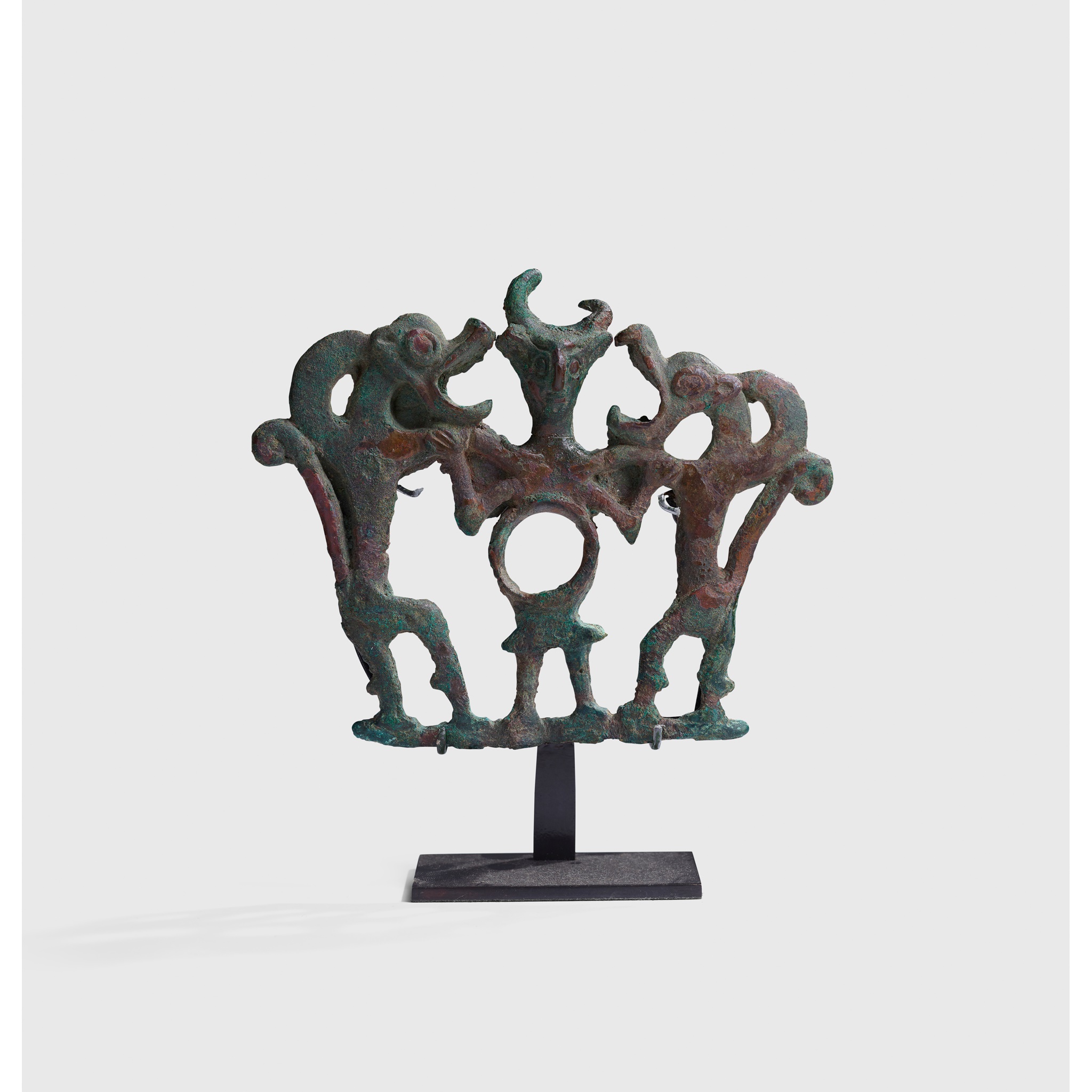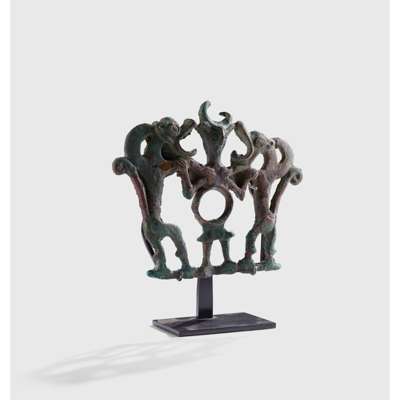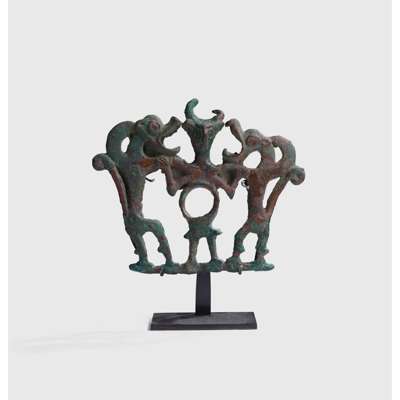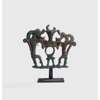
Lot 25

LURISTAN MASTER OF ANIMALS CHEEKPIECE
ZAGROS MOUNTAINS, EARLY 1ST MILLENNIUM B.C.






Auction: 8 June 2022 at 14:00 BST
Description
cast bronze, at the centre stands a horned deity, flanked at either side by mythical beasts that he appears to be taming or mastering, his midriff forms the loop through which the bit would have been placed, presented on a bespoke mount
Dimensions
12.3cm tall
Footnote
Provenance:
Private collection, United Kingdom, acquired 1990s
Note:
In the early first millennium B.C. the inhabitants of the Zagros Mountains to the north of Persia produced a rich variety of bronze objects; from weaponry and standards to vessels and horse tack. The magnificence of the items associated with equestrianism, such as the present example, point to the nomadic lifestyle of the people who fashioned them.
The motif depicted here of an anthropomorphic figure standing between and grasping two confronted animals is a particularly ancient one. Known as The Master of Animals, it likely represented a deity or talismanic figure with dominion over nature. The Master of Animals appeared throughout the ancient Near East and Egypt for thousands of years, with its roots sitting deep in prehistory. The earliest known example appears on a terracotta stamp seal excavated in southern Mesopotamia dated to c. 4000 B.C.
The initial emergence of this motif at the time and place of the very first agricultural societies is likely not coincidental. It reflects the seminal change in our relationship with nature, from hunter gatherer to farmer. The desire to operate above, rather than within the natural world.
For a similar example please see: The Cleveland Museum of Art, Ohio, accession number 1961.33.





